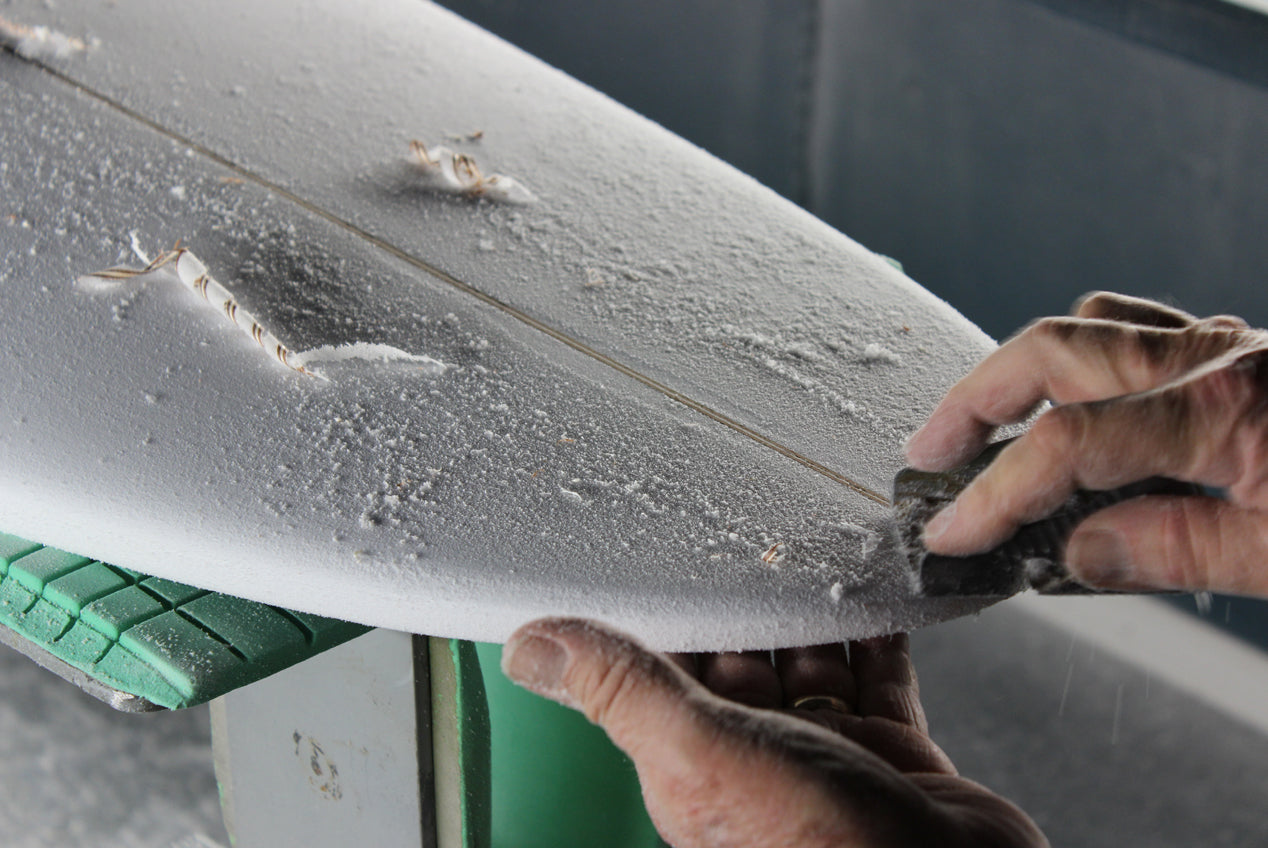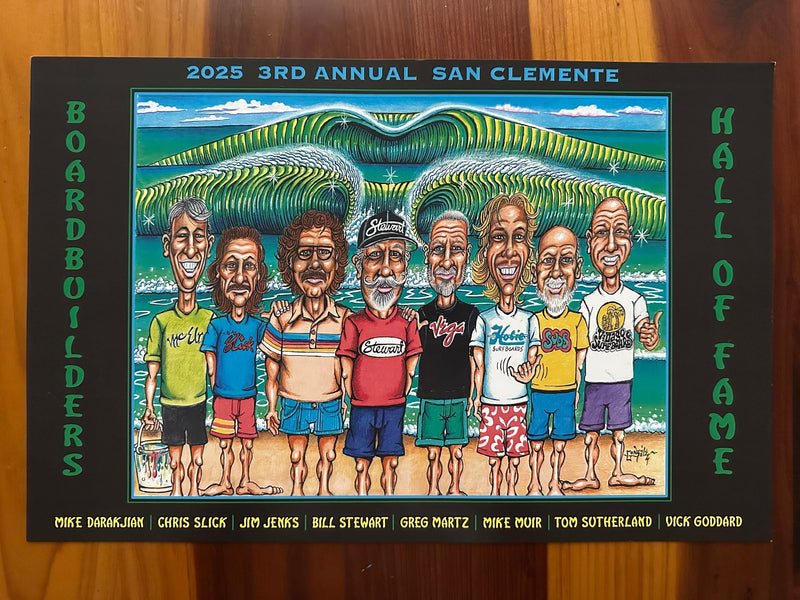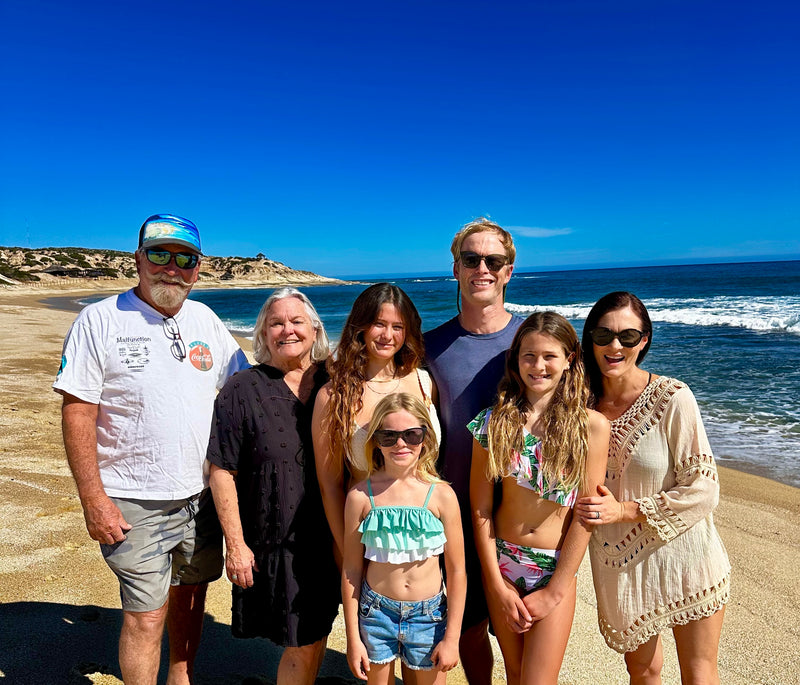Exploring Your Surfboard Design
•Posted on November 08 2019

Surfing can be an epic experience, but as any experienced surfer knows, not all boards are created equal. Every surfer should know the basics of their board before they hit the waves.
Stewart wants YOU to know your board, so we’re here to walk you through the design of your surfboard to help you choose the board that’s right for you, catch more waves, improve your skills, and max out your fun in the water.
Surfboard Design: The Core
Every surfboard has a buoyant core to hold your weight and help you float. We’re going to start from the inside out with the blank.
The Blank
Surfboards are shaped out of a high-quality foam blank. The two most popular types of foam are polyurethane and expanded polystyrene. Your surf style and how you like to ride waves will determine which foam you need. Bill Stewart discusses the pros and cons of Poly and EPS foam types in this video.
Stringer
Once the foam is formed, a stringer, or stringers depending on preference, are glued vertically in-between foam pieces. The stringer gives the foam rigidity, strength, and flex, and is pivotal to overall board performance. Depending on your skills and preferences, stringers can come in a wide range of materials and sizes. Narrow stringers flex more, but are also more prone to breakage. Multiple stringers make the board more rigid, which is fine for traditional longboarding, but not ideal in a high-performance board. Basswood is light and strong and has become the industry standard, but other woods including redwood and balsa wood are often used to give a board a more classic/vintage look.
Fiberglass Cloth
Shaped foam is weak and porous. Most of the strength of a board comes from the fiberglass that’s wrapped around the board. Fiberglass is measured in ounces, which is the weight of the material per square meter. Four ounce and six ounce, in combinations together, are the most commonly used weights of cloth. Basically, the heavier the fiberglass and the addition of multiple layers wrapping around the rails, the stronger the board, but you’re adding weight to the board which sacrifices performance. It’s a trade-off, so ultimately you want to get just enough fiberglass without going overboard.
Resin
Floating on its own, foam will absorb water. To seal the board and prevent any absorption of water, the board is glassed with fiberglass and resin. Resin binds the fiberglass cloth to the surface of the blank. Resin type depends on the type of foam the blank is made from. Poly foam is typically glassed with polyester resin, but it can be glassed with epoxy. The opposite is definitely NOT true — try glassing an EPS board with poly resin and it will completely melt the foam! Both the resin and fiberglass cloth come together to create a strong shell that ultimately turns that foam blank into a rideable surfboard.
Surfboard Design: Shape
The outline of a board is critical to the performance of your board. Let’s talk about shape and design.
Size (and why we don’t believe in volume)
Size refers to the length, width, and thickness of the board. Everyone is concerned with “volume” these days, and we agree that it is a decent benchmark, but it’s not the end-all when it comes to knowing if a board is the right size for you or how it will perform. Here’s why: volume is only a measure of the space an object takes up. It doesn’t take into account the SHAPE of that object. Meaning, a bowling ball could have the same volume as your magic board, but good luck trying to paddle and catch a wave on it!
In general, bigger boards make paddling easier and provide more stability, but can be harder to turn. Shorter boards are easier to turn, but paddling is harder. A wider/thicker board makes paddling and catching waves easier by lifting you out of the water, improving your paddling speed across the top of the water. But, again, the amount of foam isn’t everything when it comes to paddle power! A huge board with a bad shape won’t paddle well, whereas a smaller board with the right amount of rocker and perfectly blended concaves in the bottom will glide across the water like you wouldn’t believe! Again, the “right” size board for you depends on height, weight, age, ability, where you surf, and what you’re trying to do on a wave.
Rails
Hard and soft rails refer to the shape of the edge of the board. Rail type varies by board shape and performance expectations. In the sixties, boards were made with round rails and round bottoms, a displacement-hull design that limited the maximum speed of a board. Realizing that surfers wanted to go faster on waves, shapers started to put harder edges on boards, to increase speed through planing efficiency. The rails were so hard that they started catching/digging, so shapers tucked the rails under on the front of the board to make it more forgiving off the top. At that point, Stewart created one of his innovations that is now used across the industry, the beveled rail, which allows a thicker board to have a thinner, harder rail and makes it more forgiving in the turns. Bill Stewart discusses the beveled rail in this video.
Nose and Tail Shape
The nose of a surfboard can vary from a round traditional longboard shape (perfect for noseriding) to a sharp, pointed shortboard/gun shape (easier to duck dive and drop in to steeper surf). Tails can come in virtually any shape, from a rounded-off square (squash) to a swallow to a rounded point (pin) to the 5-sided “diamond” tail design of our 949 models. Wide tails can give the board more planing efficiency at slower speeds while narrow tails can improve a board’s ability to roll from rail to rail quickly at high speeds. There are endless variations of nose and tail shapes that should be customized to your surfing style and ability.
Rocker
The rocker is the overall curve of the profile of the board lengthwise. Nose rocker is designed to eliminate plunging the nose of the board under the water. More tail rocker increases the radius of your turn, but too much makes the board go really slow. Rocker affects the paddling, turning, and overall maneuverability of the board. Bill Stewart talks about rocker in this video.
Final Words
Shapes, designs, and materials of a board combine to create the perfect ride for each surfer. Progress to the next level, whether that means noseriding, throwing it off the top, or simply catching more waves, by learning about your board and how it works.
Whether you’re a beginner or an expert, our shop is ready to guide you through how to design a surfboard specially tailored to your surfing style and skill level, or lead you to a surfboard on our floor that meets you where you’re at in your surfing game.
At Stewart, we work to make sure that each surfer’s board will help them catch the ride of their dreams!


